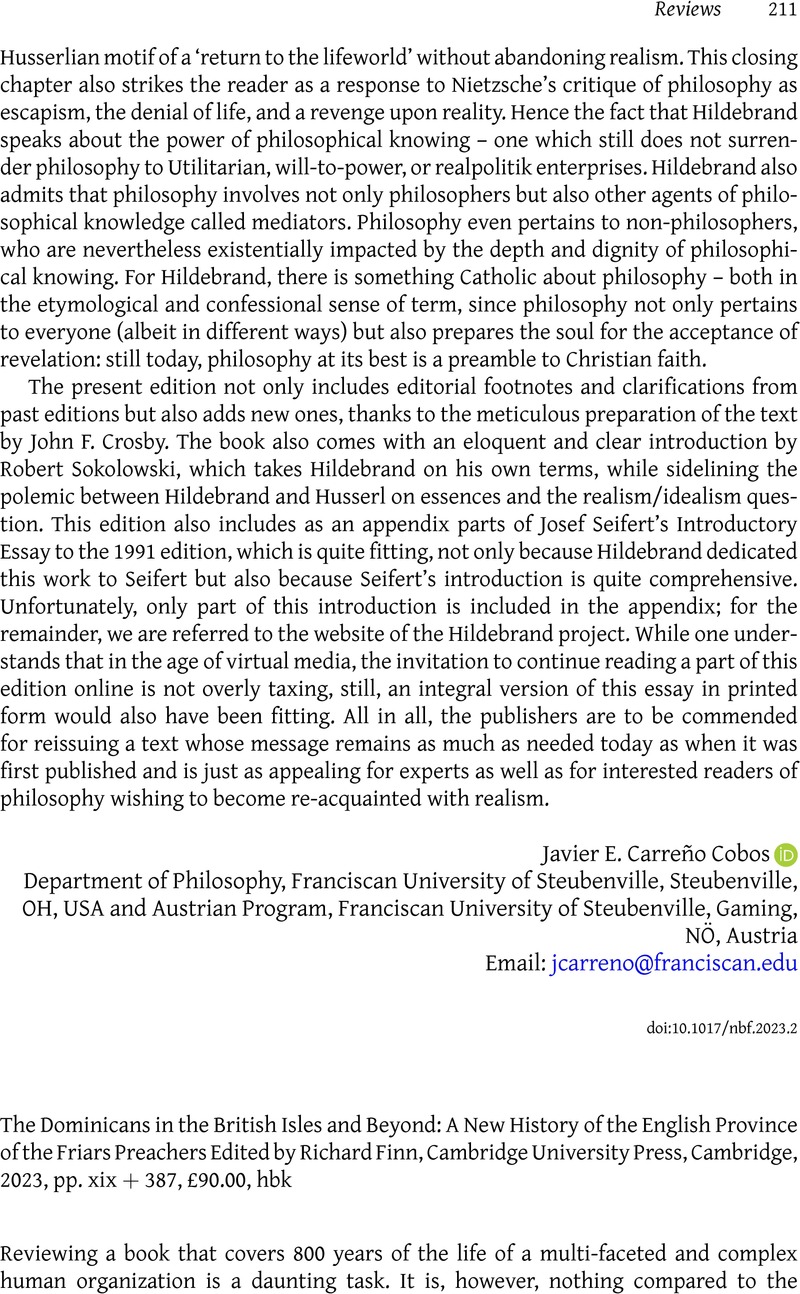No CrossRef data available.
Article contents
The Dominicans in the British Isles and Beyond: A New History of the English Province of the Friars Preachers Edited by Richard Finn, Cambridge University Press, Cambridge, 2023, pp. xix + 387, £90.00, hbk
Review products
The Dominicans in the British Isles and Beyond: A New History of the English Province of the Friars Preachers Edited by Richard Finn, Cambridge University Press, Cambridge, 2023, pp. xix + 387, £90.00, hbk
Published online by Cambridge University Press: 26 January 2024
Abstract
An abstract is not available for this content so a preview has been provided. Please use the Get access link above for information on how to access this content.

Information
- Type
- Review
- Information
- Copyright
- © The Author(s) 2024. Published by Cambridge University Press on behalf of Provincial Council of the English Province of the Order of Preachers.


